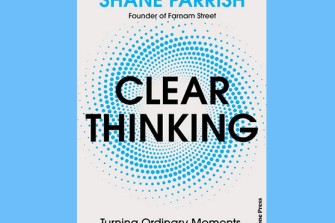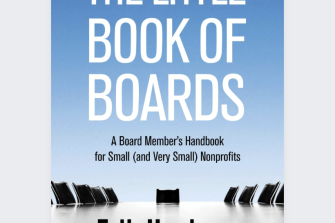The linked article on Human Capital Management in this edition notes the current challenge of finding good staff. You will not retain staff if they are engaged in unproductive or unsatisfying work. Hamel and Zanini’s book is a useful reminder of that reality.
On one hand this is an anti-bureaucracy manifesto. It outlines contemporary approaches to organising people and business, but the underlying ideas are not new. Ricardo Semler [1] was promoting his ideas of industrial democracy thirty years ago. The basic premise is simple, that those closest to the work should be given as much freedom of decision making as possible.
As company co-founder Edouard Michelin noted ‘One of our principles is to give responsibility to the person who carries out a given task because he knows a lot about it’.
The authors walk us through how very diverse companies have applied this simple idea, including Haier, Nucor, Michelin, Svenska Handelsbanken and Southwest Airlines.
This is an eloquent expression of fundamental governance principles, noting that, ‘the trick is to distinguish between the what and how—to separate ends and means’. Interestingly, in their carefully constructed culture, Southwest Airlines places a strong emphasis on the idea of servant leadership. [2] John Carver, in constructing his Policy Governance framework, drew heavily on Greenleaf’s thinking.
Many of the devolved models outlined in the book are essentially federal in nature. A centre providing necessary frameworks and some boundaries but preferably remaining small and conducting oversight with a light touch. Charles Handy [3] observed that ‘federalism is an age-old device for keeping the proper balance between the big and the small’. He contended that the centre should indeed be small, perhaps partially dispersed, but strong and well informed. The centre cannot run things and should be too few in number to be tempted. The central task is ‘to be trustee of the future but having sufficient influence to ensure the present does not run out before the future arrives’. [4]
The early part of Humanocracy focuses on the failures of organisations as they add stultifying layers of management. Jean-Claude Marie Vincent, an early eighteenth-century French Minister, coined the word bureaucratie, literally the rule of desks. He viewed it as a threat to the spirit of enterprise. A century later, philosopher John Stuart Mill went further and described bureaucracy as a vast tyrannical network.
The authors suggest that that in the US there are over 13 million managers and 9.5 million FTE employees producing little or no economic value and that current levels of economic output could be achieved with 14% fewer people.
To be fair, it is noted that between 1890 and 2016 the value created by an hour of labour increased thirteen-fold in the United States, sixteen-fold in Germany and eight-fold in Great Britain. But while ‘bureaucracy multiplied our purchasing power; it shrivelled our souls’. The thesis here is that bureaucracy was a product of its time, but times have changed. The pace of change is ‘hypersonic’; competitive advantage lies in innovation and today’s employees are skilled, not illiterate cogs in a machine.
The essential difference between the two approaches is summed up in the following distinction. In a bureaucracy human beings are instruments employed by an organisation to create goods and services. In a humanocracy, the organisation is the instrument; it is the vehicle human beings use to better their own lives and the lives of those they serve.
All the approaches outlined in the book have some form of profit sharing as part of the model. Most studies that have considered increased autonomy and gainsharing show a positive correlation to performance. So, what are the critical behaviours in such models? Dutch research identifies eight elements in what they called a servant leadership model:
Empowerment: Increasing the decision-making autonomy of one’s subordinates Accountability: Holding individuals accountable for the consequences of their decisions Selflessness: Giving priority to the needs of others Humility: Openly acknowledging one’s limitations and mistakes Authenticity: Relating honestly and openly with others Courage: Challenging institutional norms in the interest of supporting others Forgiveness: Demonstrating empathy and a willingness to forgive Stewardship: Taking responsibility for the success and integrity of the institution as a whole.
A separate study found that it was the combination of financial upside and autonomy that had the most marked impact, reducing turnover by over 50%. Despite this, the authors contend that the prevailing view taken of frontline staff remains that they are ‘meatware’ and can’t be upgraded.
Corroborating this, Gallup’s 2019 Great Jobs survey revealed that in the US only 9 percent of nonmanagerial employees strongly agree that they are free to take risks to improve products and services or solutions. A fairly depressing finding.
When there is no ownership at the coal face, and employees are subject to pointless policy or managed by a nonsensical set of KPIs, then the human default is to delegate failure upward.
Hamel and Zanini suggest the difference is that ‘in a bureaucracy, human beings are shackled by precedent, narrow role definitions, petty rules, and constant oversight. In a humanocracy, control comes from a shared commitment to excellence, from accountability to peers and customers, and from loyalty to an organisation that treats you with dignity.’
The book goes into detail on the sample companies. The approaches are varied, as you would expect given the diverse cultural settings. But the stories are extraordinary and some of the freedoms afforded to frontline teams are beyond brave. Nucor’s success is based on smaller, more nimble steel mills with high levels of technology and flexibility. When orders started drying up in one plant, the front line simply turned marketers, looking to find new customers for new (yet to be developed) products and actually went outdoor knocking for new clients.
It is also made clear that this is not easy and often relies on an enlightened and committed senior or preferably chief executive. And it takes time and tolerance for failure on the way. But then something has to change. The authors cite independent studies by McKinsey, Boston Consulting Group, and Bain & Company, where 75 percent of all standard change programs fail to meet their objectives.
We know, at heart, that the basic premise of respect for the individual is correct but inverting the management perspective to one of servant leadership is not an easy transition at the individual or corporate level.
Is your organisation a bureaucracy? Try running the BMI test (Bureaucratic Mass Index Survey) outlined in the book’s Appendix A. It might be a bit sobering.
1. https://en.wikipedia.org/wiki/Ricardo_Semler
2. See Robert Greenleaf. Servant Leadership (1977) Paulist Press
3. See Charles Handy. The Empty Raincoat. (1994) Hutchinson Random House
4. Handy, Ibid








